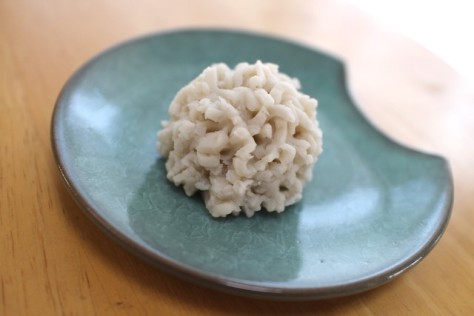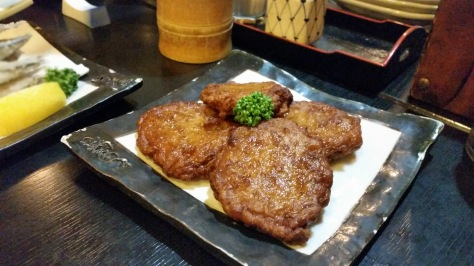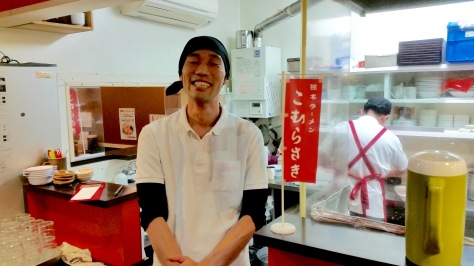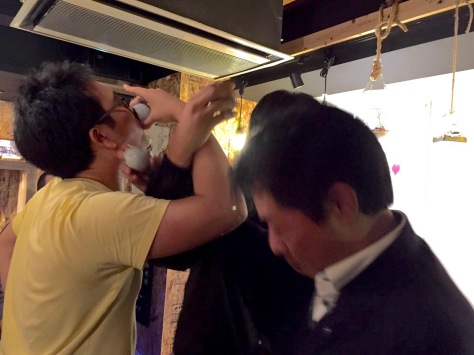Readings in Japanese Literature 日本文学:
若い読者のための短編小説案内という村上春樹の本を授業にディスカッションを行った。面白いのは『ねじまき鳥クロニクル』という村上春樹の小説について、どのように生まれたかということだ。ただ一行だけから、長い小説ができた。
「その女から電話がかかってきた時、僕は台所に立ってスパゲティーを茹でているところだった」
そして、先生はみんなにこの一行から一人ずつ一行を挙げてほしい。結局その話はすごく面白くなった。とても楽しかった。それに、その経験は僕がYNCの時に思い出した。一行から、いろいろな可能な方向を考えて、少しずつ話を進む。
We had a discussion about “A Reader on the Short Story for Young Readers”, a book written by Haruki Murakami. We learnt how the book “Wind Up Bird Chronicle” came about, from just one line into a long story.
So as an activity, we took the first line from the book, and Ito sensei asked us to contribute one line per person. In the end, we came up with a pretty hilarious and interesting story. I enjoyed it a lot! Also, this reminded of times back in YNC at the Lit Collective, and I thought about how good it’d be if we did it again haha.
Creative Writing クリエティブ・ライティング:
クリエティブ・ライティングの授業に、もうすぐ小説を書こうとしているから、このコツを使うかな。先週『雨傘』の話を少し話したが、その話はこうなる。彼氏のお父さんが転勤することによって、彼氏が家族めぐり他の町に引っ越しするので、二人の恋人が別れようとした。そうする前に、写真屋に写真を撮りに行った。二人きりで、恥ずかしくて、あまり話していないが、その過程で、何気なく、二人間の感情がはっきり現れた。
とても感動的な小説だと思う。
そのあとで、僕は新しい小説のあらすじを書いた。これは本当に悩んでいた。どのような一行がいいのか。「風があまりなくて、くらくらさせる厳暑の中に、彼女がドアをノックした」そんな感じかな。他の文を考えないといけない。
In the Creative Writing class, we are about to start writing a short story, so I guess I could use the tip we learnt in Literature class haha. I talked about the story “The Rain Umbrella” we read in class back in the previous post, but this is how the story went. It’s about a couple who’s about to break up because the guy’s dad got transferred out of his workplace to another city, so they have to move house as a family. So they go to a photo shop to get their photos taken. They were really embarrassed and didn’t really talk to each other but through the process, they subconsciously showed their feelings through to each other.
It was a really moving story.
After that, we had to write the outline for our short story. I really wrecked my brains on this one. How should the first line go? “In the dizzying heat of summer, with hardly any wind, she knocked on the door”. Something like that? I need to think up of more stuff.
Teaching Japanese as a Foreign Language:
その授業でアクセントに関して勉強した。僕にとって一番びっくりしたのはルールなのだ。初級の時にそれをあまり勉強せずに済んだから、どのような発音が正しいか、ほとんど雰囲気で決める。しかし、日本人でもそれをはっきりしない。とても有名な例は、「はし」という言葉だ。例えば、はしを渡る。はしで食べる。端にある。何の違いがあるのかな。その言葉だけではなくて、そのすぐ後の助詞は高低かどうか決める。「橋を渡る」と「端にある」の「はし」は同じ高低アクセントでも、「橋を渡る」の「を」は低くて、「端にある」の「に」は高い。
大ざっぱに言えば、日本語のアクセントの規則は何なのか?二つある。一つ目は、第一音節と第二音節では、必ず高さが変わる。二つ目は、一つの中では、高いアクセントは1か所しかない。そして何のためするか?意味を区別して、語のまとまりを示す。語のまとまりといえば、例えば「毎日新聞を読む」それは「毎日新聞」を読むか、あるいは「毎日、新聞を読む」それはアクセントで決める。
大変重要なポイントだ。先生になることであれ、学生としての勉強であれ、これは身につけるべきなことだ。
I learnt about accents in Japanese in “Teaching Japanese as a Foreign Language class”. I was really surprised about the rules. When I was a beginner, I never really paid much attention to it, so I just went by intuition as to whether a pronunciation was right or not. But, even Japanese people aren’t so clear about this. There is a well-known example of the word はし and it has 3 pronunciations which are pretty hard to take apart if you’re not used to hearing them. I’ve written it above, so take a look!
Roughly speaking, there are two rules for accents in Japanese. The first one is that the first and second syllables can’t be of the same pitch. The second, is that there is only one higher pitched syllable in any word. So what’s the purpose of accents? First is of course to differentiate between meanings of word with the same hiragana, but the other is to round up the end of a word. Example is above!
So it’s a really important point. Whether you are going to be a teacher or simply just a student, it’s something to take seriously.
University Preparatory Japanese 大学進学準備UPJセミナー:
一番役に立つのは文法の勉強だ。そして、「〜を皮切りにして」という文法は好きだ。頭にすぐ浮かぶイメージはリンゴの皮をむくということだ。本当の意味は何か起こって、次に起こったことはさらに発展していくという意味だ。
そして、「〜や否や」と「〜が早いか」の違いを明確するために、30分でいろいろなビデオを見たり、自分で考えたりしていた。結局、その違いは、「〜や否や」というのは、前後の出来事はほぼ同時に起こる。最初の出来事が起こった瞬間に、次のがすぐ来る。「〜が早いか」というのは、最初の出来事が完全に終わった瞬間に、次のがすぐ来る。ニュアンスが本当に一見に見えない。
Learning grammar for N1 was pretty useful. I liked the one with 「〜を皮切りにして」It had a very strong imagery for me that was easy to remember haha.
Also, I tried to differentiate between the meanings of 「〜や否や」and「〜が早いか」which roughly translates to “no sooner than” and “as soon as”. The nuance of the meanings are so close, that I took about 30 minutes to get the differences clear in my head.
Tea Ceremony 茶道:
お茶を飲んだり、和菓子を食べたりする授業だね。今週食べた和菓子はきんとんという和菓子だ。

そんな感じだけど、黒ごまとあんこが入っていて、すごく美味しかった!
ちなみに、その授業はこういうものをするに限らず、どうやって雰囲気を作るのか大事なのだ。最初に、布巾や、お箸や、おじきや、などのマナーを学んだ。全部を覚えるのは大変だけど、スムーズにすると、とても繊細な雰囲気を感じた。
Well, it’s often said that the tea ceremony class is just a class to drink tea and eat snacks. Not too far from the truth actually haha.
I ate this thing called kinton, and it had black sesame and red bean paste in it. It was so so so good.
But well, we don’t just eat snacks and drink tea, but we also learn how to observe and maintain the atmosphere of a tea ceremony. We learnt how to handle the napkin, the chopsticks, bow and other mannerisms. It was a little hard to remember everything, but I really felt the refined atmosphere of the room.
つまり、以上述べた授業には、どうやって想像力を生かせるのか、どうやって綺麗な日本語を話したり、書いたりするのか、という前提として考えた。最後に、雰囲気を優先するというとても日本的な考え方を学んで、これから、自分の行動をもっと意識すべきだと気付いた。
Essentially, what I did in class was really how to make use of my imagination and how to write and speak beautiful Japanese. Also, it’s a very Japanese thing to put the atmosphere of the situation first, and from there, I became really aware of my movements, whether it be a slight move of the arm, or a twitch of the thumb.
Good week I say?



































































